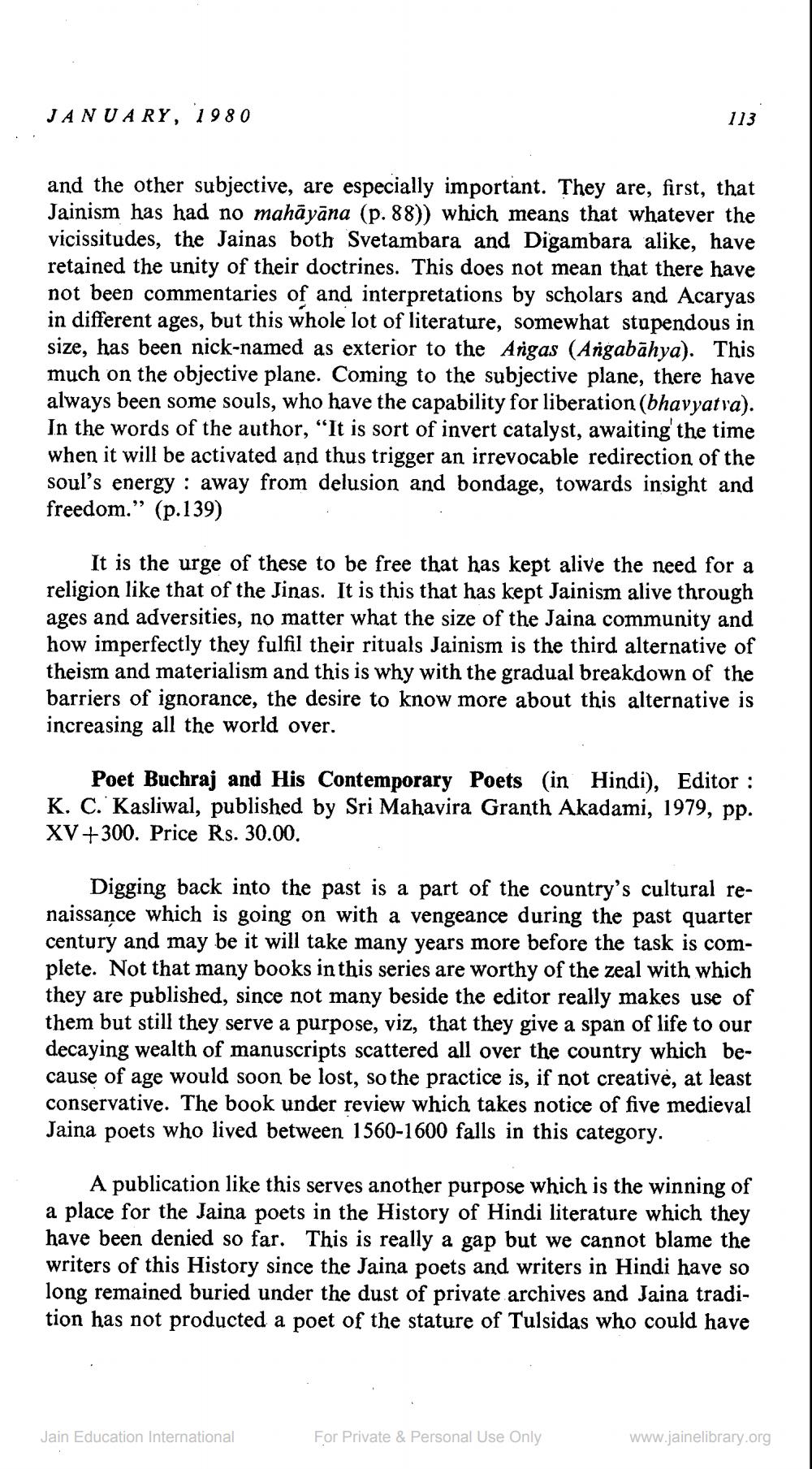________________
JANUARY, 1980
113
and the other subjective, are especially important. They are, first, that Jainism has had no mahāyāna (p. 88)) which means that whatever the vicissitudes, the Jainas both Svetambara and Digambara alike, have retained the unity of their doctrines. This does not mean that there have not been commentaries of and interpretations by scholars and Acaryas in different ages, but this whole lot of literature, somewhat stupendous in size, has been nick-named as exterior to the Argas (Argabāhya). This much on the objective plane. Coming to the subjective plane, there have always been some souls, who have the capability for liberation (bhavyatva). In the words of the author, "It is sort of invert catalyst, awaiting the time when it will be activated and thus trigger an irrevocable redirection of the soul's energy : away from delusion and bondage, towards insight and freedom.” (p.139)
It is the urge of these to be free that has kept alive the need for a religion like that of the Jinas. It is this that has kept Jainism alive through ages and adversities, no matter what the size of the Jaina community and how imperfectly they fulfil their rituals Jainism is the third alternative of theism and materialism and this is why with the gradual breakdown of the barriers of ignorance, the desire to know more about this alternative is increasing all the world over.
Poet Buchraj and His Contemporary Poets (in Hindi), Editor : K. C. Kasliwal, published by Sri Mahavira Granth Akadami, 1979, pp. XV+300. Price Rs. 30.00.
Digging back into the past is a part of the country's cultural renaissance which is going on with a vengeance during the past quarter century and may be it will take many years more before the task is complete. Not that many books in this series are worthy of the zeal with which they are published, since not many beside the editor really makes use of them but still they serve a purpose, viz, that they give a span of life to our decaying wealth of manuscripts scattered all over the country which because of age would soon be lost, so the practice is, if not creative, at least conservative. The book under review which takes notice of five medieval Jaina poets who lived between 1560-1600 falls in this category.
A publication like this serves another purpose which is the winning of a place for the Jaina poets in the History of Hindi literature which they have been denied so far. This is really a gap but we cannot blame the writers of this History since the Jaina poets and writers in Hindi have so long remained buried under the dust of private archives and Jaina tradition has not producted a poet of the stature of Tulsidas who could have
Jain Education International
For Private & Personal Use Only
www.jainelibrary.org




